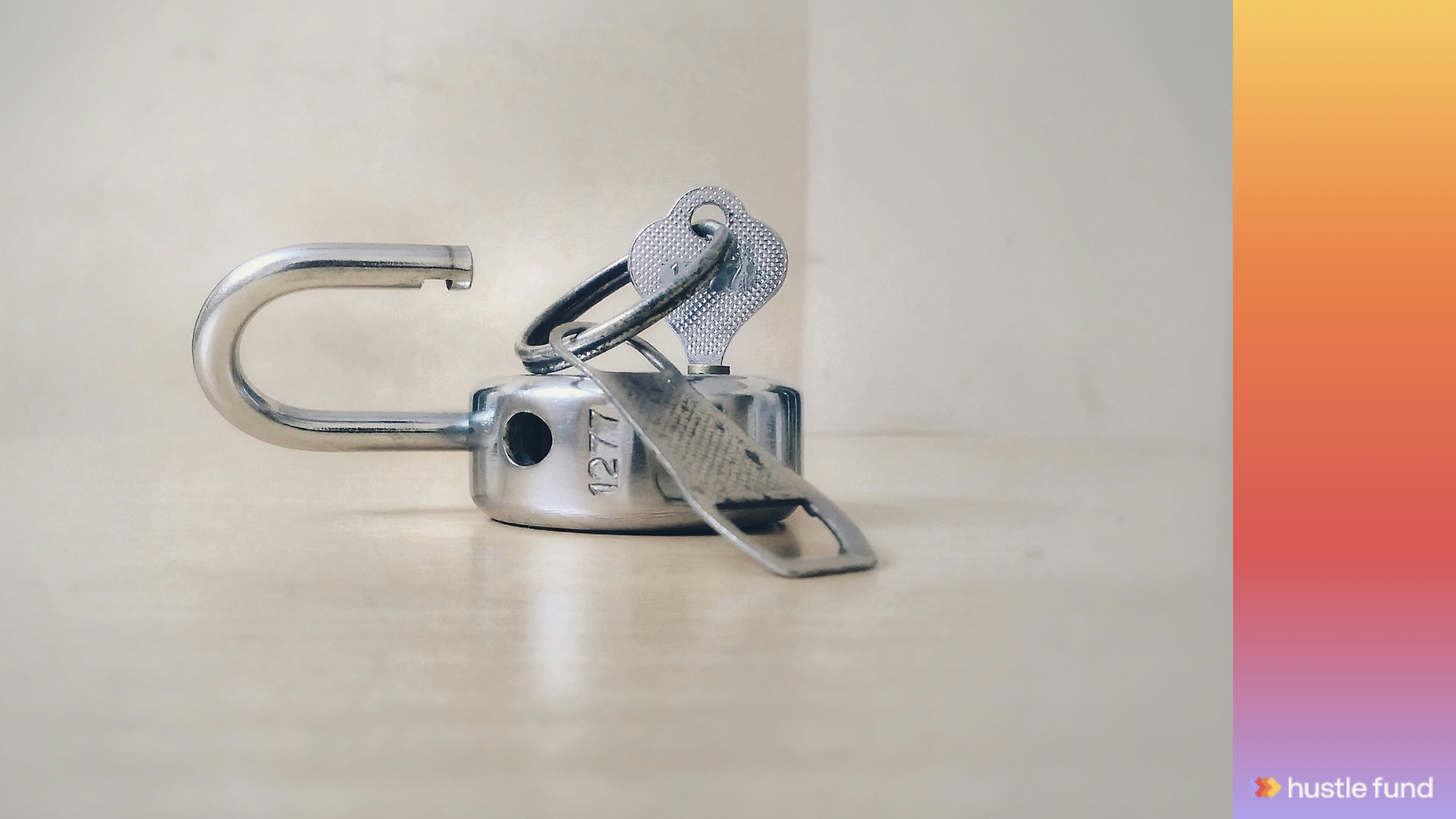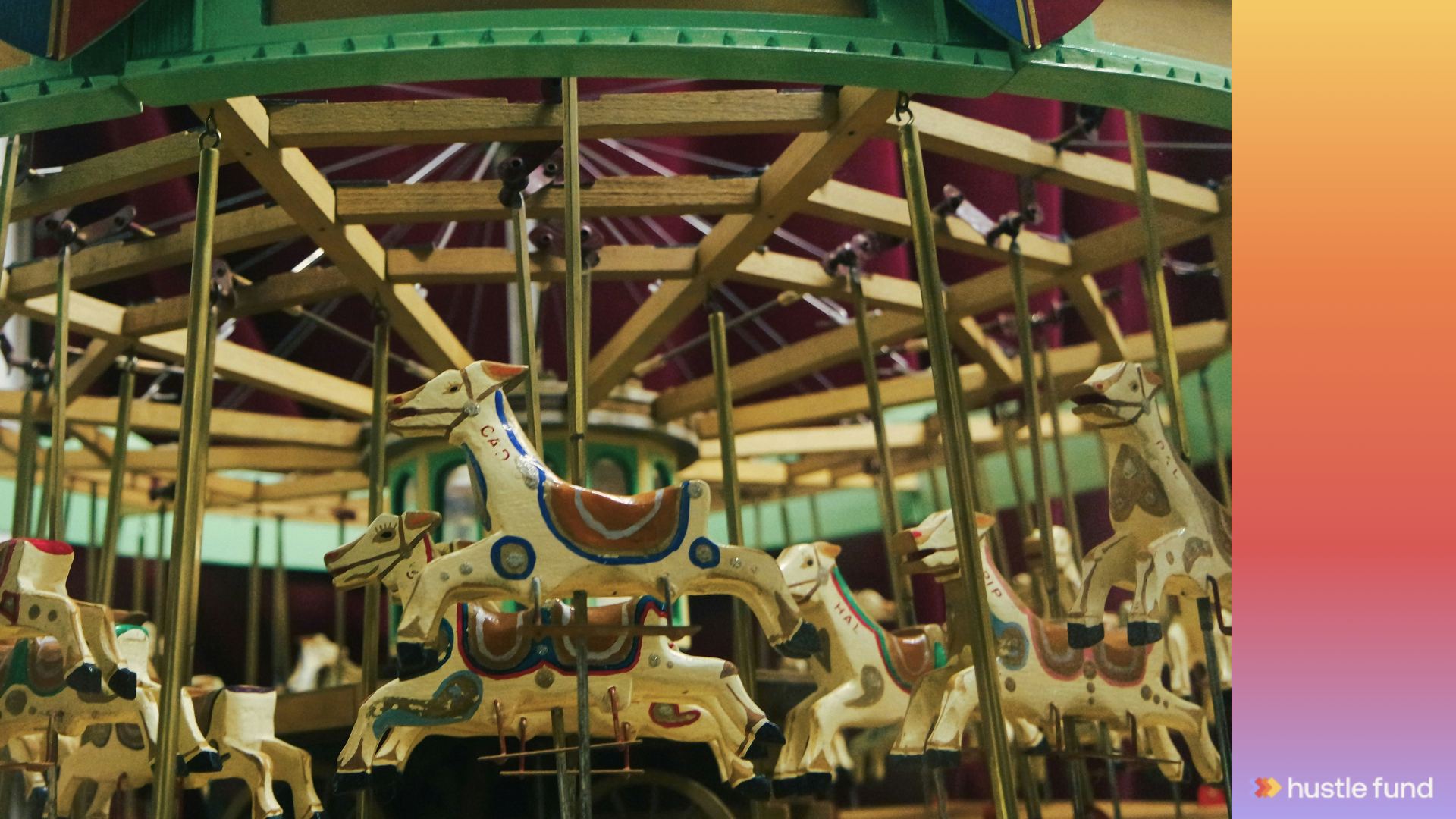How risky is venture capital, really?
.png)
Brian Nichols is the co-founder of Angel Squad, a community where you’ll learn how to angel invest and get a chance to invest as little as $1k into Hustle Fund's top performing early-stage startups
Welcome to Big Bets, a special series of “Small Bets” that breaks down later-stage investing concepts.
Big Bets is brought to you by Jamie Melzer and Katie Nowak of HF Scale Partners. HF Scale invests in pre-IPO venture-backed technology companies through primary rounds and secondary transactions.

Today's topic: how risky is venture capital, really?
You walk into a casino and have a choice of two bets.
Bet 1: You lay down $95, and the dealer gives you $100 back, guaranteed.
Bet 2: You ay down $95, and the dealer gives you either $0 or $300 based on a coin toss.
Which bet would you pick? Why?
How you answer “why” reflects your understanding of a not-so-little thing called risk. Today, we are going to demystify what risk actually means when investing.
Enter the “Risk Curve” - ta-da!

Let’s break down this risk curve
The first dot on the risk curve is the “T-Bill.” Treasury bills, backed by the U.S. government, are the safest investments you can make.
Here’s how they work: You give the government 95 cents, the government gives you a Treasury bill. When the T-bill matures, the government gives you 100 centsfor their Treasury bill.
You will not get paid more, and you will not get paid less. Your return is guaranteed.
This is referred to as the “Risk-free rate,” and today it sits at roughly 5%. (Note: interest rates and the “risk-free rate” are effectively the same thing).
The risk-free rate acts as the opportunity cost for every other investment decision you make … including venture capital.
That means: you can either lend money to the U.S. government for a guaranteed 5% return, OR you can attempt to earn more than 5% by investing in something with potentially higher returns. Keep in mind that other investment opportunities aren't going to have guaranteed returns, so they are inherently riskier. This is called "moving up the risk curve.”
What does “moving up the risk curve” entail?
With respect to investing, "Risk means uncertainty about which outcome will occur and about the possibility of loss when unfavorable ones do," according to Howard Marks in The Most Important Thing. (This is my favorite definition of risk.)
In short, it’s the risk of a permanent loss of capital.
As we saw in the T-bill example above, the risk of a permanent loss of capital is zero. The government is guaranteeing a return, which means that, at a minimum, you’ll get your money back plus a 5% return.
As you move up the risk curve, the potential outcomes start to widen – meaning that you can make more money, but you can also lose more.
See venture capital way out there on the right of the curve? 👀
It’s positioned there because venture capital has the greatest range of potential outcomes for the dollars you invest.
Your 95-cent angel investment could become 0 cents … (and has a high probability of doing so) ... or, your 95 cents could 100x into 9,500 cents! 🤯 (though this outcome has only a 1-2% probability)
(An angel investor in Uber famously returned 4000x on his $25k angel check.)
There is no other asset class where you can get a 100x+ potential return on your investment. But there are also few investments that are as likely to go to 0 as venture capital.
In actuality, the risk curve should look more like this, with the range of potential outcomes increasing as you move up the curve:

So ... how do you go from “buying a lottery ticket” to generating venture-like returns?
As an early-stage investor, the #1 way to de-risk your investments and increase the odds of a winner is through diversification.
You only need one 100x outcome to recoup the losses from the 90% that fail and generate venture-like returns.
But if only 1-2% of companies make it to that 100x outcome, then you would need to invest in 50-100 companies to increase your odds of having a winner.
And even with one 100x “winner,” you won’t make a 100x return on all of the money you invested … after offsetting all of the losses and accounting for the time it took to get there, you may get closer to your goal of venture-like returns of 25-30% annualized.
Let’s go back to the casino
Remember our “Bet 1” and “Bet 2” questions?
The right answer is actually a question – “how many times can I make the bet?”
If you can make the bet 100 times, you’re likely to take Bet 2. You’ll lose $95 half of the time… but you’ll make $300 the other half. And after 100 coin flips, you are likely to end up with $150 or a $55 return.
But if you can only make the bet once, you may decide to take the guaranteed $5 return of Bet #1 and walk away.
This is akin to diversification in early-stage investing.
Where are you going with this risk stuff?
In early-stage investing, the outcomes are not binomial (like the coin toss scenario above).
In our next Big Bets, we’ll break down venture investing across stages, from early to growth to late-stage investing, and how to think about risk and returns across stages.
On the edge of your seat? So are we.
See you next time,
Jamie + Katie
Big Bets is brought to you by Jamie Melzer and Katie Nowak of HF Scale Partners. HF Scale invests in growth and late-stage venture-backed technology companies through primary rounds and secondary transactions. Want to learn more? You can find us here.













